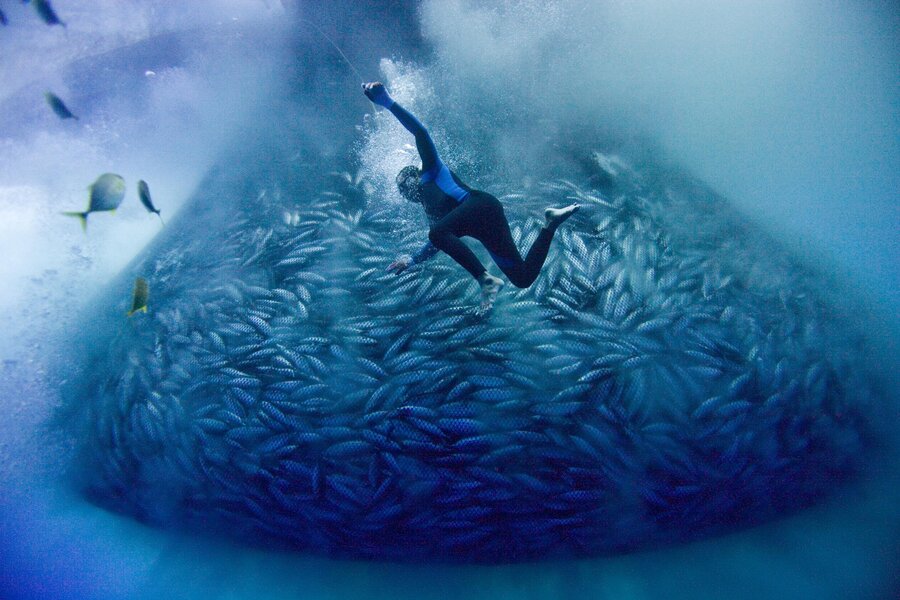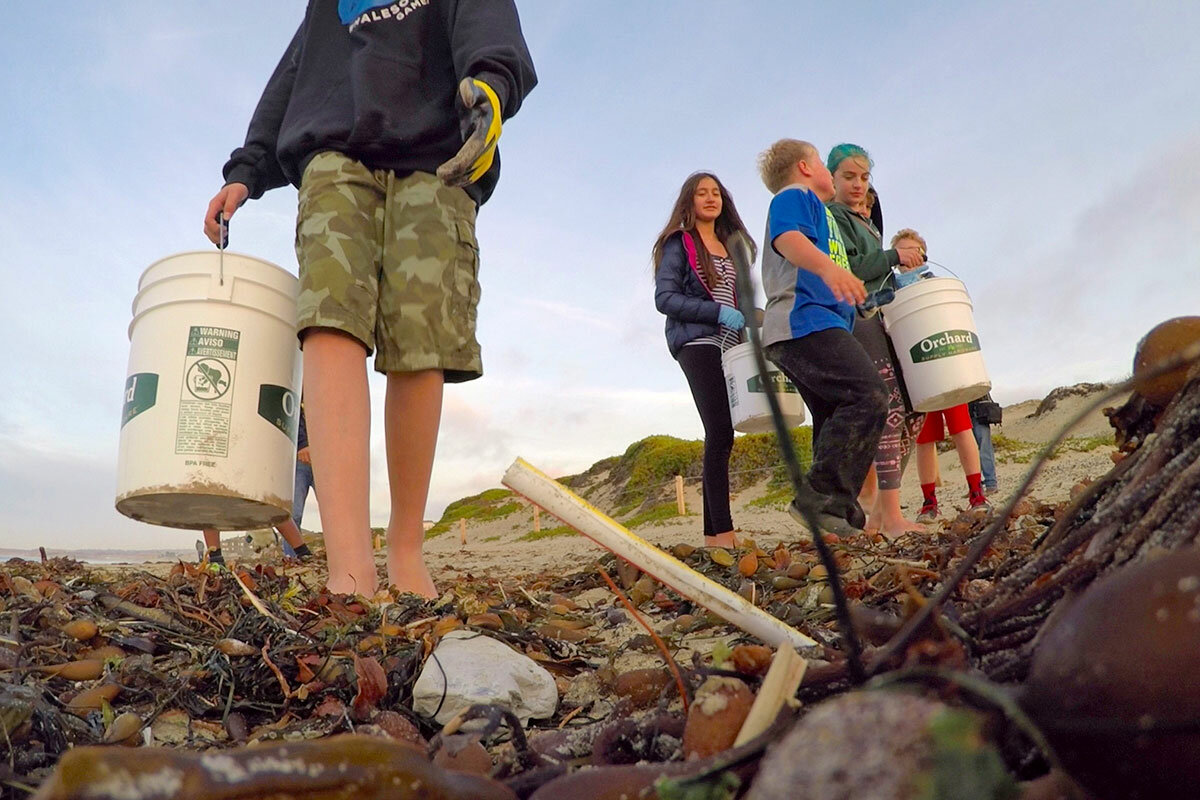One film festival's quest to turn moviegoers into ocean stewards
Loading...
| San Francisco
Ana Blanco is on a mission to save the ocean – one film at a time.
As executive director of the International Ocean Film Festival, Ms. Blanco views film as more than a vehicle for entertainment or a temporary break from reality. It can transport viewers to distant seaside towns, to uninhabited shoals, and into the curl of a wave. But more than that, it can make audiences care about a world they may never witness for themselves.
This year’s festival, which opens Thursday in San Francisco, will showcase 45 documentaries from 13 countries that all explore ocean-related topics. Blanco is keeping a particularly close eye on “Straws,” a 33-minute documentary by filmmaker Linda Booker about the environmental impact of plastic straws, as a contender to become the next breakout film.
“Once you see a scientist extract a plastic straw from a turtle’s nose, you just know plastic straws will eventually get banned in cities everywhere,” Blanco says. “But it takes this kind of film to make that happen.”
Not every film comes with a specific call to action. Since its founding in 2004, the festival has promoted films that explore coastal culture, oceanic adventures, undersea wildlife, marine science, environmental problems, or conservation solutions. Each film is selected to inspire audiences “to appreciate and care for the ocean,” according to the festival mission.
“Film festivals are a powerful platform to promote a broader conservation ethic,” says John Armor, director of the National Oceanic and Atmospheric Administration’s Office of National Marine Sanctuaries.
Mr. Armor, who grew up on a farm in Rhode Island, cites Jacques Cousteau’s film series of undersea explorations as the inspiration behind his pursuit of a career in marine science. After 20 years with NOAA, Amor has noticed a cultural shift that appears to go hand-in-hand with a rising popularity of environmental documentaries.
“I can’t point to cause and effect,” Armor says. “But there is an increased sensitivity to the importance and fragility of oceans. I believe film has played a large role in raising this awareness.” And that matters, Armor concludes, because “we save what we love.”
Sparking action
The effects of introducing audiences into ocean worlds can ripple far beyond the movie theater. Former National Geographic photographer Louie Psihoyos’s film “The Cove,” which detailed the annual killings of dolphins in a Japan, went on to win an Oscar after sweeping the festival circuit. But more than that, it led to meaningful change, Mr. Psihoyos, IOFF’s “Ocean Champion” of the year, told benefactors at a recent fundraising gala for the festival.
“I don’t know how many minds we changed,” he said, but according to data from the Japan fisheries Agency, the number of porpoises and dolphins killed “has dropped from 23,000 to less than 3,000 a year.”
The immersive nature of film makes it an ideal springboard to activism and public engagement, Psihoyos says.
“There is something about beautiful images, a musical score, and a strong narrative that rewires the people’s feeling,” he says. “People’s hands are shaking when they come up to me at festivals.”
The communal experience of seeing a film in a theater adds to medium’s emotional power, he adds.
“On paper, film festivals don’t make any sense,” Psihoyos laughed. “Only 1,000 or 2,000 people will see it. But they are the early adoptors. They’ll go back and tell people. Every person who falls in love with your work becomes a walking billboard for the film.”
An enduring tradition
Environmentally themed documentaries that have broken out of the festival circuit to reach box office success have played starring roles in public dialogue. The 2013 film “Blackfish” elevated the controversy over the captivity of orca whales to international prominence and helped spark a dramatic shift in the way the public views the use of wild animals as entertainment. Former Vice President Al Gore’s 2006 documentary “An Inconvenient Truth” similarly converted legions to awareness or activism on climate change.
The International Maritime Film Festival in Toulon, France, has been using film to call attention to ocean matters since 1954. That program, which was launched in the same town where Cousteau established the Underwater Research Group for the French Navy, has been something of a role model for the IOFF, Blanco says. It’s also where Cousteau purchased the Calypso, the deep-sea vessel most associated with his pioneering underwater research, diving, photography, and filmmaking.
Part of the impact is that films can spread from one festival or venue to another. Environmental films are also showcased at the The Banff Centre Mountain Film and Book Festival in Alberta, Canada; the Environmental Film Festival in Washington, DC; BLUE Ocean Film Festival and Conservation Summit in St. Petersburg, Fla.; and the largest, Sundance Film Festival.
International Ocean Film Festival runs March 8-11 in San Francisco at Fort Mason Center for Arts & Culture. Blanco says IOFF films are often selected to air on Netflix and Amazon.
The nonprofit is also in talks to bring their program to Washington in June for World Ocean Day and to Quebec for the G7 Summit. This fall, IOFF’s program will travel to festivals in Barcelona and Kiel, Germany. Blanco also plans to send IOFF’s program to her counterparts at the Thunder Bay International Film Festival in Alpena, Mich., and Gray’s Reef Film Festival in Savannah, Ga., for 2019. Like IOFF, these festivals are cosponsored by the NOAA and the National Marine Sanctuary Foundation.






